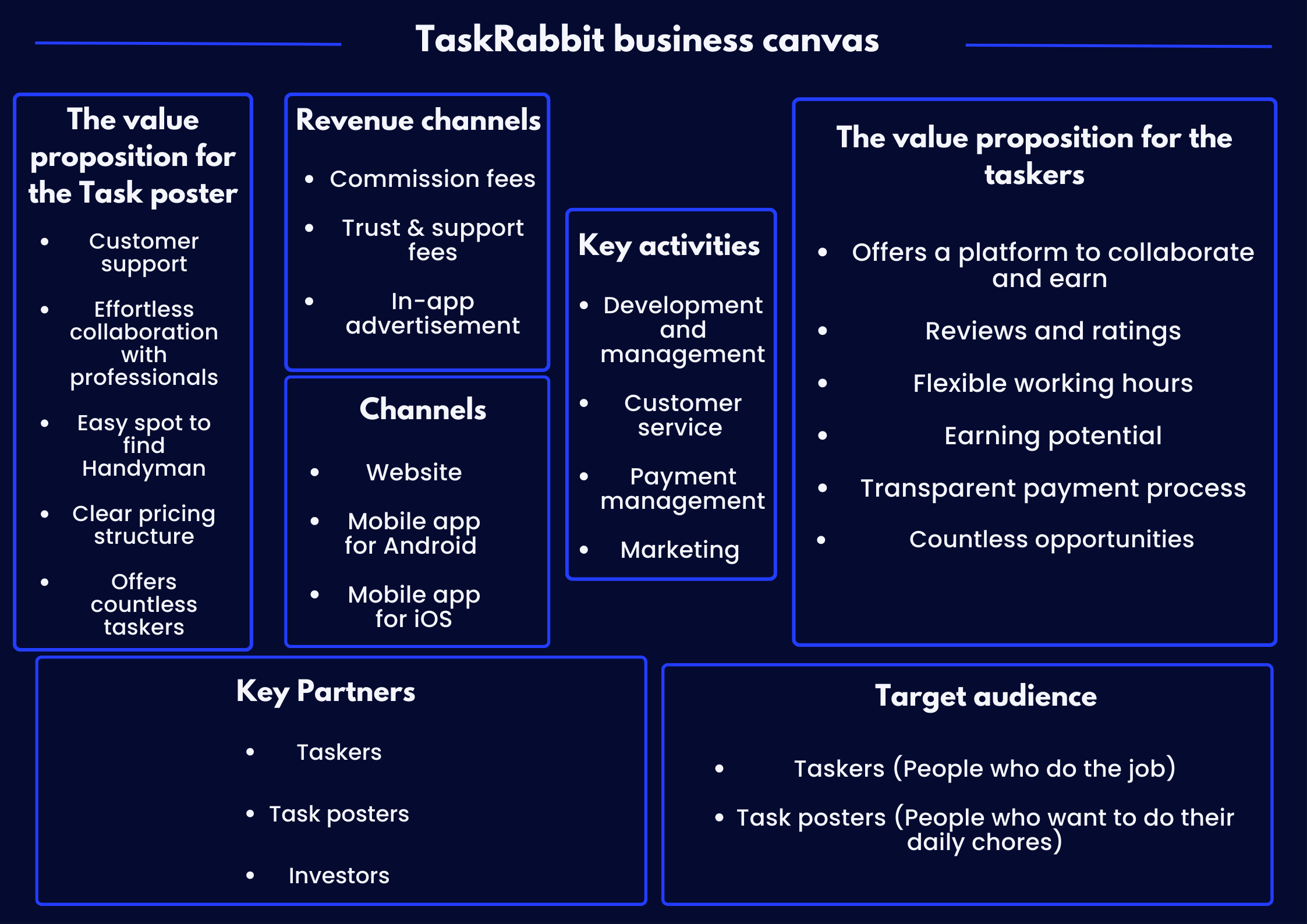
Analyzing TaskRabbit's Business Model and Revenue Channel
From a small startup to generating $81.5 million as revenue in 2022, delve into its unique business models and explore its lucrative channels.
Do you know that TaskRabbit hit $81.5 million in revenue last year?
Since the launch of their mobile app in 2011, they have scaled and groomed to be one of the top players in the Handyman business.
So amazing, right?
How do they broaden their revenue - business - what's the unique value they hand over for users, and whatnot? We tend to cover everything in precise detail.
So let's GET in!
How did TaskRabbit progress in its initial stage?
TaskRabbit is a marketplace platform that connects freelance professionals with the seeker. We all know that commission is one thing, and what are the rest? How the transition of enlarging their revenue channels went?
Continue reading.
Let's start from the beginning. Leah Busque started TaskRabbit in 2008. And in 2012, after four years, they received $37.7 million from venture capitalists.
But something has to motivate - to seed the thoughts of starting a new business.
That happened when the founder, Leah Busque, had no free time to buy dog food; that is when the idea of TaskRabbit gets discovered, "neighbors helping neighbors".
In 2017, TaskRabbit was acquired by IKEA Group, a furniture and home goods company. Yet, we don't need an introduction to IKEA.
Surprisingly, in 2022, TaskRabbit announced that it would continue as a remote-based company, meaning it planned to shut down all its physical stores.

TaskRabbit business model?
TaskRabbit relies on an aggregator model where the platform doesn't hold tangible assets, instead; it connects both task poster and tasker in return for a commission.
That's how they earn the most out of the revenue. Apart from that: trust, support, and registration fees give them a big hand in enlarging their revenue channels.
In their initial stage, like every company, they struggled to persuade users to use the app, and as we expect, they found a way and now - transformed into a renowned player in the Handyman business.
TaskRabbit started as an eBay-like auction system where taskers bid on a particular service, yet, taskers need to wait!
Then the Handyman business moves towards the direct booking model, which enables taskers to book the service directly. Yes, we are witnessing that way of booking.
The husband and wife duo
Leah and Kevin Busque were school friends; after graduation, they shared rings and went to explore technical roles at IBM.
The idea arose when both were trapped inside their homes and unable to leave to buy dog food. That is when they realize - there's a gap in the market, and we need to fill this.
After a month of coding to build their MVP platform, the team launched TaskRabbit, oops! RunMyErrand was its initial name in 2008.
While they began establishing their presence, recession exists, and millions have lost their employment and livelihood. But that disaster doesn't a concern for TaskRabbit.
In 2009, they received $1 million as seed funding, and in 2010, the name RunMyErrand changed to TaskRabbit.
In the motive to scale their business across the world, they initially launched their service in London in 2013.
TaskRabbit revenue model
TaskRabbit is a service-based company - like most on-demand apps out there. We all know they charged commission, trust & support fees, and registration fees, which all come under revenue channels.
Let's break in precisely.
Service fees
For task posters: TaskRabbit charges 15% as a service fee from the total amount billed to the task posters.
For taskers: They charge about $15 as a registration fee. In return, they do background verification for the taskers; however, the amount paid isn't refundable.
1. Trust and support fees
Apart from charging a commission, they take 7.5% as a trust and support fee.
2. Peak pricing
If a particular service or category is in demand, the task poster will be charged through the peak pricing system, thereby controlling the flow of demand and supply.
3. In-platform advertisement
It allows the service category to get featured while task posters search for it.
Moreover, it creates more visibility resulting in more work and money for taskers. And for TaskRabbit, it's extra revenue for them.
The value proposition for the Task poster
- Customer support throughout the day
- Provide a platform to collaborate with professionals
- Perfect spot to find Handyman
- Clear pricing structure
- Offers countless taskers
The value proposition for the Taskers
- Offers a platform to collaborate and earn
- Reviews and ratings help them display credibleness
- Flexible working hours
- Transparent payment process
- Diversifying opportunities
- Increased earning potential
Workflow for the Taskers
Taskers signup using their personal information and background details. The process may include uploading photos, highlighting their skills, and adding relevant experience.
- Sign up
- Set up profile
- Identify verification process
- Registration fees
- Set up availability and preferred locations
- Get started
Workflow for the Task posters
Task posters sign in to the platform using their personal information. Following that, the process may be: like choosing the task and the taskers - and confirming and getting things done.
- Sign up
- Choose category
- Enter the address and details of the tasks
- Select the taskers
- Confirmation
- Completion
Final notes
Examining the TaskRabbit business model reveals that the platform bridges the enormous gap between individuals and skilled workers. Its unique approach has upended the traditional service industry and has opened new possibilities for gig workers.
While TaskRabbit continues to expand its reach and enhance its services. Following TaskRabbit, most of them were trying to follow the steps. As a result, they either built their platform from scratch or with a readymade Handyman solution.
I hope this blog sum up your learning experience.





